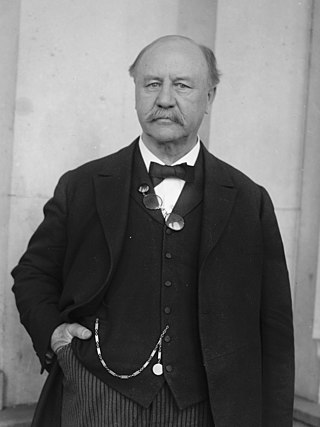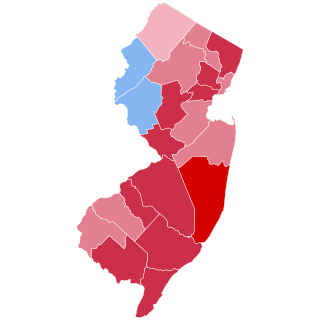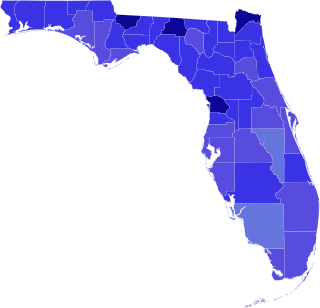
Presidential elections were held in the United States on November 4, 1924. Incumbent Republican President Calvin Coolidge won election to a full term. Coolidge was the second vice president, after Theodore Roosevelt, to ascend to the presidency and then win a full term.

The Progressive Party, popularly nicknamed the Bull Moose Party, was a third party in the United States formed in 1912 by former president Theodore Roosevelt after he lost the presidential nomination of the Republican Party to his former protégé turned rival, incumbent president William Howard Taft. The new party was known for taking advanced positions on progressive reforms and attracting leading national reformers. The party was also ideologically deeply connected with America's radical-liberal tradition. After the party's defeat in the 1912 United States presidential election, it went into rapid decline in elections until 1918, disappearing by 1920. The "Bull Moose" nickname originated when Roosevelt boasted that he felt "strong as a bull moose" after losing the Republican nomination in June 1912 at the Chicago convention.

Samuel Moffett Ralston was an American politician of the Democratic Party who served as the 28th governor of the U.S. state of Indiana and a United States senator from Indiana.

Winfield Taylor Durbin was an American politician serving as the 25th governor of the U.S. state of Indiana from 1901 to 1905. His term focused on progressive legislation and suppression of white cap vigilante organizations operating in the southern part of the state. He was the seventh and last veteran of the American Civil War to serve as governor.

The 1912 Minnesota gubernatorial election took place on November 5, 1912. Republican Party of Minnesota candidate Adolph Olson Eberhart defeated Democratic Party of Minnesota challenger Peter M. Ringdal.

The 1916 United States presidential election in New York took place on November 7, 1916. All contemporary 48 states were part of the 1916 United States presidential election. Voters chose 45 electors to the Electoral College, which selected the president and vice president.

The 1926 United States Senate election in Illinois took place on November 2, 1926.

The 1912 United States presidential election in New Jersey took place on November 5, 1912. All contemporary 48 states were part of the 1912 United States presidential election. Voters chose 14 electors to the Electoral College, which selected the president and vice president.

The 1922 United States Senate election in Indiana took place on November 7, 1922. Incumbent Republican U.S. Senator Harry Stewart New ran for re-election to a second term in office, but was defeated in the Republican primary by former Republican Senator Albert J. Beveridge. In the general election, Beveridge was defeated by Democratic former Governor of Indiana Samuel M. Ralston.

The 1896 United States presidential election in New Jersey took place on November 3, 1896. Voters chose 10 representatives, or electors to the Electoral College, who voted for president and vice president.

The 1914 Wisconsin gubernatorial election was held on November 3, 1914. Primary elections were held on September 1, 1914.

The 1914 Massachusetts gubernatorial election took place on November 3, 1914. Democratic Governor David I. Walsh defeated the Republican, Samuel W. McCall, and the Progressive, Joseph Walker, and won reelection with 45.93% of the vote.

The 1912 Illinois gubernatorial election was held on November 5, 1912. Incumbent second-term Republican governor Charles S. Deneen was defeated by the Democratic nominee, former mayor of Chicago Edward Fitzsimmons Dunne.

The 1914 Colorado gubernatorial election was held on November 3, 1914. Republican nominee George Alfred Carlson defeated Democratic nominee Thomas M. Patterson with 48.67% of the vote.

The 1912 Florida gubernatorial election was held on November 5, 1912. Incumbent Governor Albert W. Gilchrist was term-limited. Democratic nominee Park Trammell was elected with 80.42% of the vote.

The 1912 Rhode Island gubernatorial election was held on November 5, 1912. Incumbent Republican Aram J. Pothier defeated Democratic nominee Theodore F. Green with 43.67% of the vote.

The 1920 Tennessee gubernatorial election was held on November 2, 1920. Republican nominee Alfred A. Taylor, brother of former governor Robert Love Taylor, defeated Incumbent Democratic governor Albert H. Roberts with 54.9% of the vote.

The 1912 Connecticut gubernatorial election was held on November 5, 1912. Incumbent Democrat Simeon E. Baldwin defeated Republican nominee J. P. Studley with 41.11% of the vote.

The 1912 New Hampshire gubernatorial election was held on November 5, 1912. Democratic nominee Samuel D. Felker defeated Republican nominee Franklin Worcester with 41.07% of the vote.

The 1946 Wisconsin gubernatorial election was held on November 5, 1946.
























